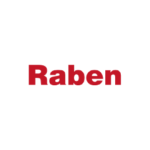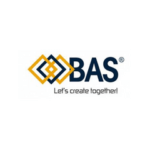Effective communication is a key element of the strategy at any company. Moreover, it is a challenge that all businesses in the market have to face nowadays. It does not matter whether it concerns the environment and image, management of change, crisis situation, employer branding or the coordination of current operations in several business processes. If it goes properly, it enables you to minimise the risk in these areas and, broadly speaking, gain a competitive advantage.
Communication and digital transformation
It is difficult now to imagine an institution or an enterprise that would not take care of the optimisation of business processes. This is the chance for them to succeed in operations supported by digital technologies. The goals of such changes vary, depending on the type of business and the environment in which a company exists. Most often, they focus on a market advantage, increasing competitiveness and quality of customer service or ensuring compliance with legal standards or good industry practices.
The ever-growing amount and importance of information processed in companies plays a major role too. Such information, taking the form of various documents, must be properly classified and, if necessary, made available to stakeholders, without undue delay, maintaining confidentiality and ensuring security.
Why is communication important?
Therefore, IT solutions that allow the organisation of an electronic repository of data and documents (known as an electronic archive) are fundamental. In addition, they support the exchange of information as well as the ordering of electronic document flow, inside and outside the organisation.
On the other hand, we are witnessing the enormous growth of social media that develop modern electronic methods of interpersonal communication through mobile devices, operating in real time. Their popularity impacts heavily on the adaptation and development of the ways of communication in IT systems that support company management.
As a result, managers may seize the opportunity to build their own organisations. This applies to communication among employees, decision-makers, partners and contractors engaged in particular business processes.
Tools improving communication and increasing the efficiency of business processes
An email will seem to be the main medium of information exchange between the company and its suppliers, partners and customers for a long time to come. Hence, do we still have to be forced to tediously search the inbox for long hours in order to reconstruct the current business arrangements or to review documents sent some time ago?
Not necessarily.
Currently, most IT systems offer built-in client applications that allows viewing of mailboxes and sending emails. Apart from that, they enable the user to register an email in the system and give it the context, i.e. link it with other data and documents in the system.
Contextual messaging, that is something. But is there any way to limit user involvement in reconstructive activities, such as attaching emails? Obviously, there is. Process automation available in ECM (Enterprise Content Management) class and BPM (Business Process Management) systems will help. By setting out relevant rules, it can analyse incoming messages in the inbox and automatically launch the electronic information/document flow process. Let us take the example of emails with electronic purchase invoices as attachments. Process automation identifies and records in the system, in an automatic and contextual way, any emails which are the response to electronic correspondence.
Standard functionalities of ECM systems include rules generating appropriate messages for users. This is done on the basis of electronic documents and events related to them, also as an email with a link to the context/document which is related to the message.
Efficient internal communication
What about internal communication among company employees or among managers? Will an email continue to be an effective medium? For example, if you want to consult with colleagues how to respond to a letter from a client, do you need to call or do you send an email?
Practice shows that in this case a much faster method to consult or exchange information will be electronic discussion and short text messages (chatting). We save time because, unlike an email, we do not have to describe the context of the message, attach documents, links, etc. Each participant has direct access to relevant information and documents which provide the basis for the discussion. Importantly, information resources are not duplicated and scattered.
The essence of process standardisation
Fast-growing companies attach more and more importance to the standardisation of their business processes. This applies especially to those which process information and documents on a large scale and which perceive the work coordination among departments, individual specialists and managers as essential.
Lack of standardisation in such cases often means low efficiency of employees and the processes themselves. Can the IT system support the implementation of standard processes? Is it possible to control the communication in such a process, depending on the type of data and documents handled and the competences needed to do that?
The answers seem to be obvious in the era of modern IT solutions, although it is worth noticing the extent to which the solutions offered are functionally flexible and scalable.
The questions we should ask ourselves in this case are:
- Can I design a flow diagram for a standard process myself or do I have to use the supplier’s services every time?
- Can the implementation of the change in the process flow take place while maintaining the continuity of the system operation?
- Are successive versions of process flows saved?
- Do I have a graphical diagram design tool at my disposal, according to the what-you-see-is-what-you-get principle?
- When designing a diagram, can I define variations of processes, taking into account any process data and document features?
- Are there any restrictions on the number of standard processes that I can implement?
The value of communication using IT solutions
It is impossible to rationally justify an investment in an IT system without trying to estimate the added value we should expect from its implementation. The use of new communication possibilities of ECM and BPM class solutions, primarily contributes to increasing the efficiency of business processes, and consequently—depending on the processes included in the implementation—to reducing costs and increasing revenues.
Also, the productivity of employees involved in the processes increases significantly. They regain the time they had so far dedicated to routine activities. Thus, they can devote themselves to creative activities. It is also important to reduce the risk associated with disrupting the continuity of the process, for example by escalating messages and managing the warrants for absences.
The current realities of information civilisation are characterised by a growing number and importance of data processed and the intensification of information exchange as well as the development of communication channels. By using appropriate IT solutions, we minimise the risk of information security breaches.
Finally, try to answer the question: do these values build a competitive advantage?
Janusz Latacz
board member, eq system

































